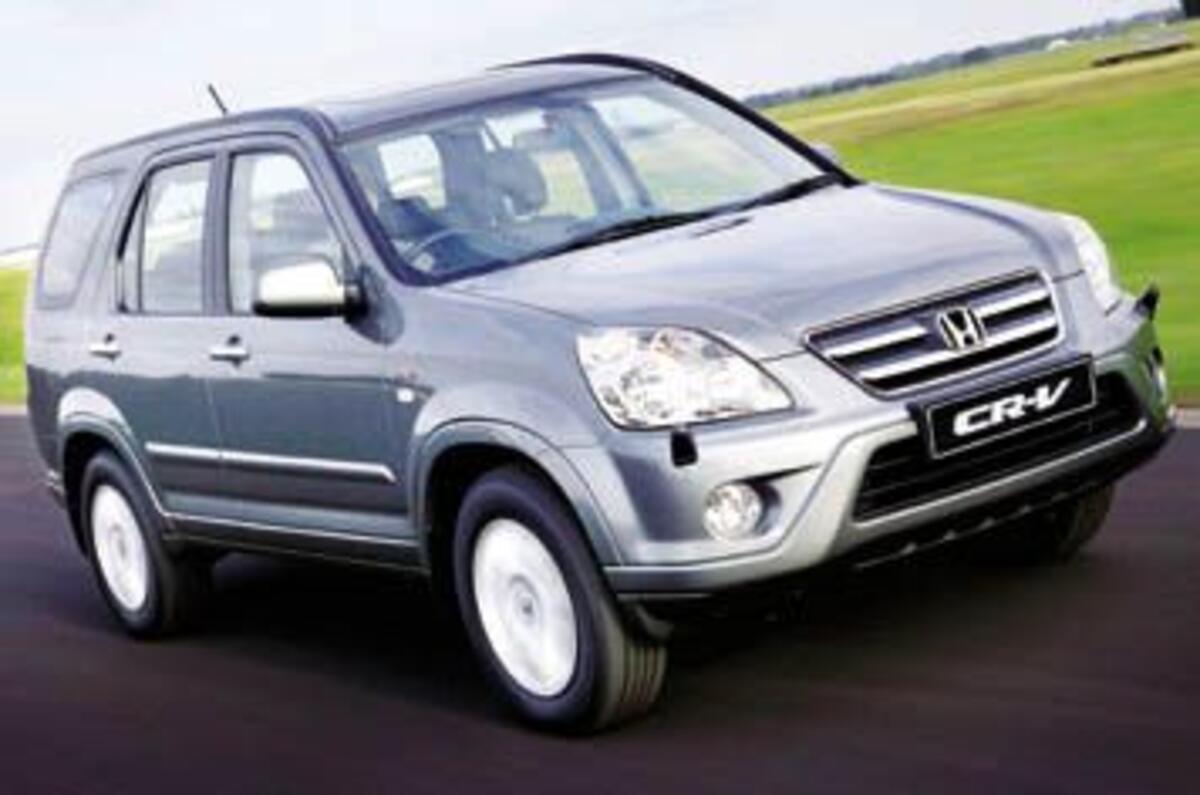The Honda CR-V is the proof that off-road vehicles don’t necessarily need to go off-road to sell well. With just over 35,000 sales in the UK last year, Honda’s school-run companion and multi-storey car park-filler is about to become a lot more ubiquitous on British roads with a mild facelift and, much more importantly, the introduction of the lauded 2.2-litre i-CTDi diesel engine as seen in the Accord saloon.
A fat 251lb ft of torque, un-diesel like refinement, a six-speed manual transmission and 39.8mpg on the combined cycle are just a few of the reasons to wait until next May for the oil-burning CR-V. But until then we’ll have to make do with the familiar dohc i-VTEC petrol version, tested here, which cranks out 148bhp and 141lb ft of torque from its 1998cc.
Squint all you like, but you still probably won’t be able to pick out the slight differences between the front and rear bumpers of pre- and post-facelift CR-Vs. New front foglights, projector-style headlamps and a slightly larger grille with more prominent horizontal chrome slats round off the front-end retool. At the other end the indicators get clear lens-covers, the reversing lights are larger and the spare tyre cover is now hard plastic instead of the previous PVC zip-up job.
Inside, there’s a noticeable improvement in materials quality, especially in the range-topping Executive trim featured here, which includes soft leather as standard for the seats, wheel and gearshift. Cabin architecture remains familiar, the console-mounted handbrake and centrally stacked sat-nav screen/heater control panel being unaltered. The interior ambience has been lifted slightly by the colourful computer screen and new backlit dials, but if you’ve ever been in an old CR-V you may feel disappointed at Honda’s limited effort to brighten up what remains a rather drab place to be.
Fortunately, practicality is still a CR-V strength. Rear seats that slide fore and aft, as well as reclining up to 45 degrees, make the CR-V one of the most comfortable cars to do a long journey in the back of. And 952 litres of boot space can be freed up by folding the rear seats flat and tumbling them forward.
On the road the 2.0-litre four-pot is a willing motivator. Its 141lb ft of torque peaks at a high 4000rpm, but there’s still enough go to keep the CR-V’s 1502kg on the move at lower engine speeds. Brakes have grown to 300mm at the front and 305mm at the rear. Ride on the now-standard 16in wheels lacks the composure of some bigger soft-roaders, but is still decent enough on most road surfaces. Rear visibility has long been a CR-V weakness, but retractable rear headrests increase the panorama visible through the rear-view mirror.
The CR-V is not intended as a heavy-duty off-roader, but if you do fancy departing the Tarmac, Honda’s tweaked ‘Real Time’ four-wheel-drive system is claimed to be better prepared to deal with the slippery stuff. Its front-to-rear torque distribution has been retuned to improve off-road acceleration and smoothness of operation.
Honda has absolutely no trouble selling CR-Vs at the moment – its ease of operation, practicality and decent on-road behaviour being all that most soft-road buyers demand. The addition of Honda’s peerless i-CTDi diesel engine – the powertrain of choice in this segment – is likely to ensure that Honda sells a whole heap more.













Add your comment